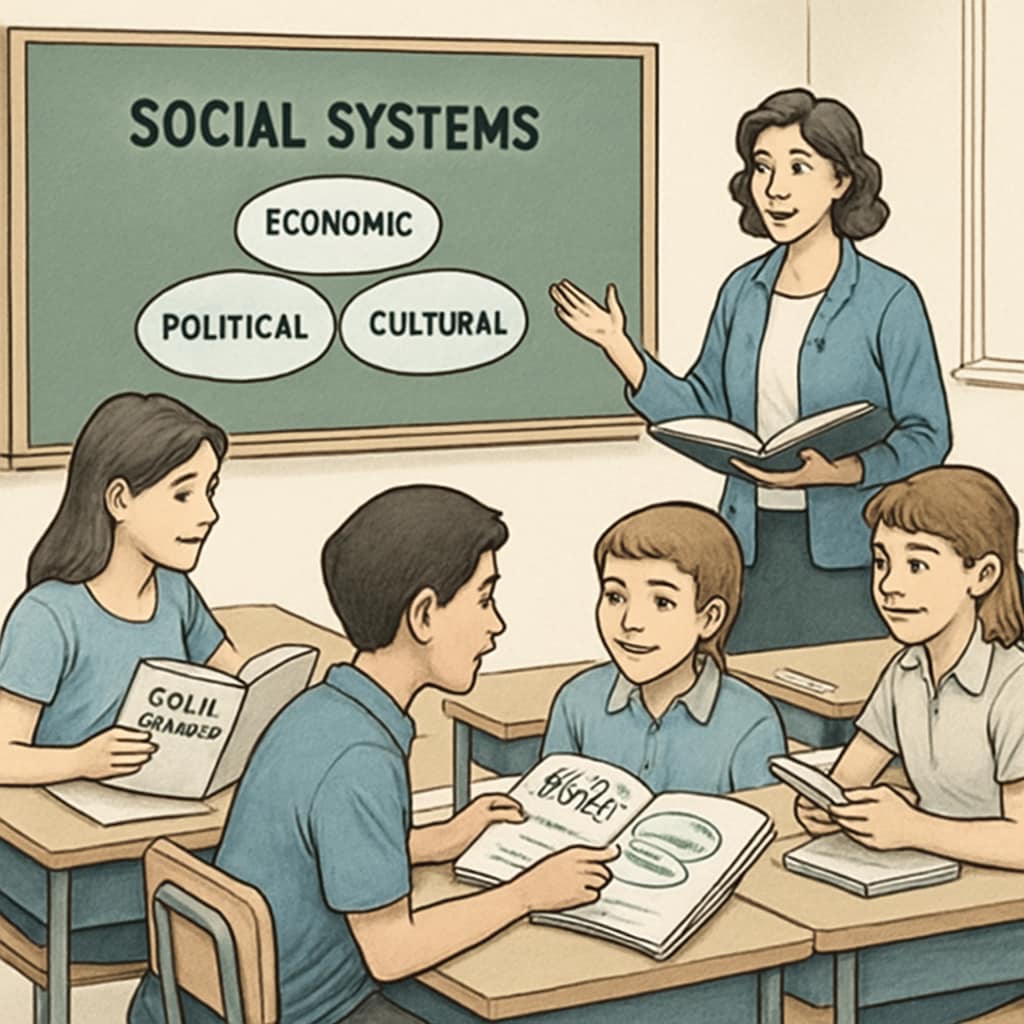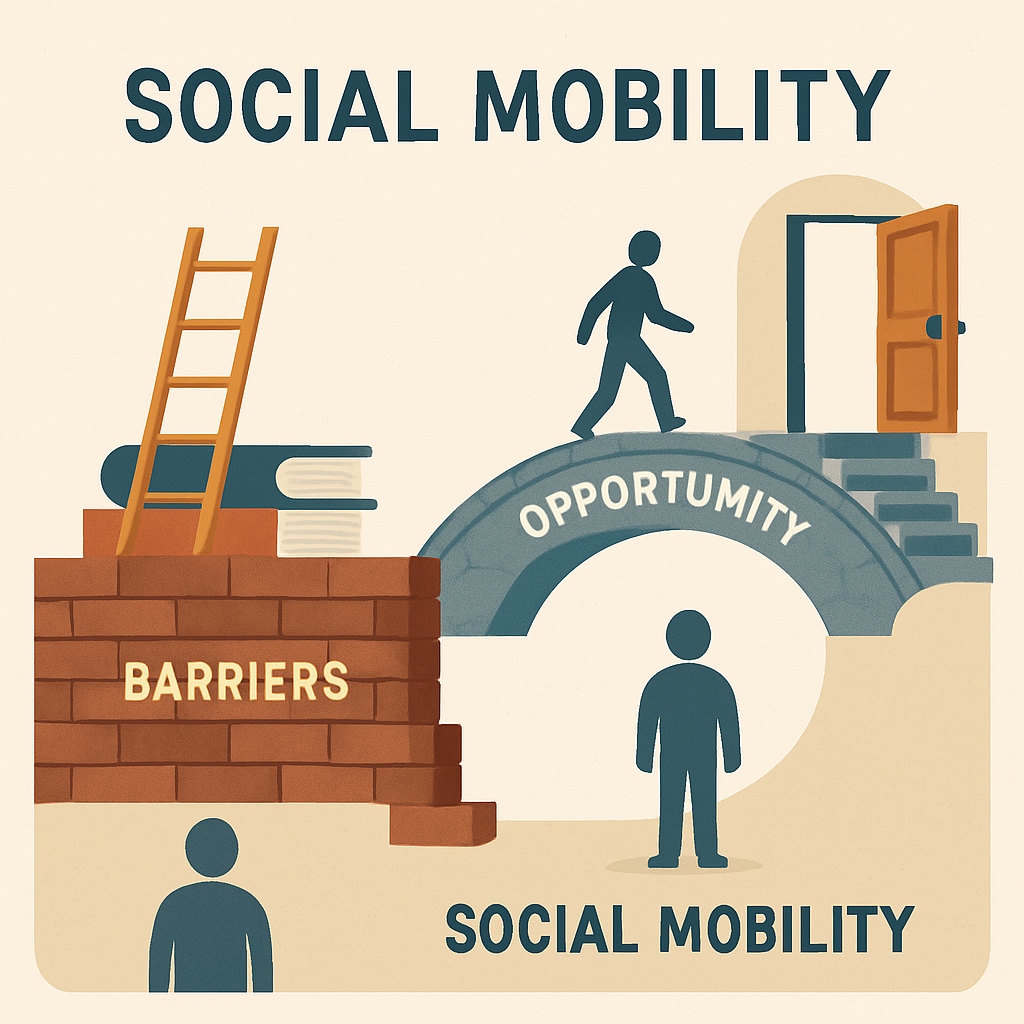The depiction of “class systems, social mobility, and school education” in textbooks has sparked significant debate among educators and parents. In particular, the presentation of class systems as inherently “rigid and immovable” in a 6th-grade social science textbook has attracted criticism. This framing, which suggests that social class is a static and unchangeable structure, raises questions about the long-term impact on students’ understanding of societal dynamics and their belief in the possibility of personal achievement. How does such an educational approach shape young minds? And what are the consequences of perpetuating a narrative that downplays societal progress and mobility?
How Textbooks Present Class Systems: A Narrow Lens
Textbooks play a pivotal role in shaping students’ understanding of the world. However, the portrayal of class systems in some educational materials has been criticized for being overly simplistic. For example, describing class structures as “rigid” and “impossible to overcome” offers a narrow interpretation of social mobility—one that neglects the nuances of economic, cultural, and structural factors.
While it is true that systemic barriers such as unequal access to quality education, healthcare, and job opportunities can limit mobility, history offers numerous examples of individuals and groups breaking out of their socioeconomic constraints. Presenting class as immovable ignores these exceptions and risks instilling a sense of fatalism in students. As a result, children may internalize the notion that their circumstances are predetermined, undermining their motivation to strive for change.

The Impact of Rigid Narratives on Young Minds
When children are exposed to the idea that class systems are immutable, it can shape their worldview in profound ways. First, it may discourage them from aspiring to higher goals, especially if they come from disadvantaged backgrounds. Second, it can create a distorted perception of success, where achievements are viewed as anomalies rather than the result of effort and systemic support.
Moreover, such narratives can perpetuate stereotypes—both about the wealthy and the poor. For instance, students might begin to believe that individuals in higher socioeconomic classes are inherently more capable or deserving, while those in lower classes are trapped by their limitations. This oversimplification not only fosters bias but also undermines the idea of meritocracy, a concept central to many modern societies.
Educators and curriculum developers must consider the psychological and social implications of the materials they use. By presenting a more balanced view of class mobility, textbooks can encourage critical thinking and inspire students to question societal norms rather than accept them as unchangeable truths.

Encouraging a Balanced Approach to Teaching Social Mobility
To address these issues, educational materials should adopt a more balanced perspective on class systems and mobility. Here are some strategies that could improve the narrative:
- Highlight historical examples: Include stories of individuals and movements that have successfully challenged class barriers.
- Discuss systemic factors: Explain how education, policies, and economic opportunities impact mobility.
- Encourage critical thinking: Pose questions that allow students to explore the complexities of class systems rather than accepting a one-dimensional view.
- Promote diverse perspectives: Incorporate voices from various socioeconomic backgrounds to provide a richer understanding of the issue.
By implementing these strategies, educators can equip students with the tools to understand and navigate the complexities of social structures. This approach not only fosters critical thinking but also empowers students to believe in the possibility of change—both for themselves and for society as a whole.
Conclusion: Redefining the Narrative of Class Systems
The portrayal of class systems as “rigid and unchangeable” in school textbooks is not only misleading but also potentially harmful. By reinforcing stereotypes and limiting students’ belief in social mobility, such narratives fail to prepare young minds for the realities of the modern world. Instead, education should inspire hope, critical thinking, and a belief in the possibility of progress.
As educators, parents, and policymakers reflect on the role of textbooks in shaping societal attitudes, it is crucial to advocate for balanced and nuanced content. This will not only enrich students’ understanding of social systems but also empower them to challenge and transform those systems for the better.
Readability guidance: This article uses short paragraphs, clear transitions, and simple language to ensure accessibility. Lists and examples are included to summarize key points, while long sentences and passive voice are minimized for clarity.


